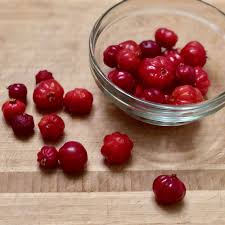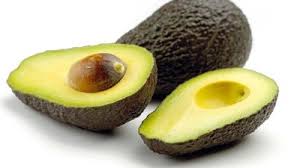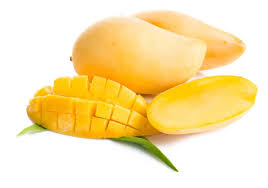Diabetes Is Not Incurable
Navigating dietary choices with diabetes can be challenging, especially when it comes to foods like fruits, which are naturally sweet. While fruits contain natural sugars, they’re also rich in fiber, antioxidants, and essential nutrients that support overall health. The key for diabetics: opting for fruits that have a minimal impact on blood sugar.
In this article, we are exploring the best fruits for people with diabetes, tips for portion control, ways to include them into daily meals, and why enjoying fruit with caution is
not only safe but also beneficial for managing diabetes.
Apple
Why Fruits Are Important for People with Diabetes
Fruits contain healthy carbohydrates, fiber, and essential
vitamins and minerals, which together help fuel your body, support heart
health, and aid digestion. Although they contain natural sugars, most fruits
have a low glycemic index (GI) – meaning they release sugar into the
bloodstream slowly – thanks to their fiber content.
"Fiber slows down digestion, which in turn helps to
prevent sharp spikes in blood sugar," explains nutrition expert Kate
Patton, MEd, RD, CSSD, LD. In addition, antioxidants in fruits play a
protective role by fighting inflammation, lowering the risk of chronic
complications often linked to diabetes, such as heart disease.
Low-Glycemic Fruits to Include in Your Diet
Using the glycemic index as a guide, here are some low-GI
fruits that provide steady energy and support blood sugar stability:
1. Apples: Packed with fiber and vitamin C, apples rank low
on the GI scale. They’re also versatile – enjoy one sliced with a smear of
almond butter for a filling snack or chopped into salads for a sweet crunch. An
average-sized apple has roughly 95 calories, 25g of carbs, and 4g of fiber.
Blue Berries
2. Berries (Strawberries, Blueberries, Raspberries): These
small fruits are nutrient powerhouses and boast high levels of antioxidants.
Berries have minimal impact on blood sugar, with a cup of strawberries, for
example, containing only about 7g of sugar and 3g of fiber. Add them to
oatmeal, yogurt, or even a protein smoothie for added flavor and health
benefits.
Peers
3. Pears: With 6g of fiber per medium fruit, pears are both
filling and low on the GI index. They also aid digestion, making them a great
after-meal choice. Try dicing a pear with a handful of walnuts for a
refreshing, diabetes-friendly dessert.
Orange
4. Oranges and Grapefruits: Citrus fruits offer
immune-boosting vitamin C and have a relatively low GI. One small orange has
about 12g of sugar and 3g of fiber, making it a good mid-morning snack. Avoid
juicing citrus, though, as this process strips away fiber and can spike blood
sugar faster.
Kiwi Fruit
5. Kiwifruit: Rich in fiber and vitamin C, kiwifruit has
around 42 calories and 2g of fiber per fruit. Its tartness makes it a
refreshing snack; slice it over salads or eat it plain to benefit from its
digestive and immune-supporting properties.
Cherries
6. Cherries: Low in GI and anti-inflammatory, cherries are
beneficial for heart health. Just a small handful, about 12 cherries, has only
10g of sugar and provides essential vitamins and minerals. Pair with Greek
yogurt or add to a smoothie for a nutritious treat.
Pomegranates
7. Pomegranates: Known for their polyphenols, which help
combat inflammation, pomegranates are nutrient-dense. Just half a cup of
pomegranate seeds provides fiber, vitamin C, and antioxidants. Sprinkle them
over salads or yogurt for a vibrant burst of flavor and health benefits.
Avocado
8. Avocado: Often overlooked as a fruit, avocados are unique
for their high healthy fat content and low carbs. They support heart health and
stabilize blood sugar. Use avocado slices in sandwiches or on whole-grain toast
for a creamy, diabetes-friendly addition.
Higher-Glycemic Fruits to Enjoy in Moderation
While these fruits are not off-limits, they should be
enjoyed mindfully, particularly when eaten alone. To reduce the impact on blood
sugar, try pairing them with fiber, protein, or healthy fats.
Banana
1. Bananas: Though bananas are nutrient-rich, they have a
higher GI. Try eating half with a handful of nuts or a dollop of nut butter to
balance the sugars.
2. Pineapple: Sweet and hydrating, pineapple has a higher GI
but can still be part of a healthy diet. Pair small servings with cottage
cheese or yogurt to mitigate blood sugar spikes.
3. Mangoes: Known for their high vitamin A and C content,
mangoes should be eaten in small portions. Add a few cubes to a spinach salad
for a nutrient-packed meal.
4. Watermelon: While refreshing, watermelon has a higher GI
due to its high sugar and low fiber content. To avoid rapid blood sugar spikes,
limit it to a few cubes and pair with protein-rich foods like a few almonds or
a boiled egg.
Raisins
Dates
5. Dried Fruits (Raisins, Dates): Although dried fruits
retain most nutrients, they contain concentrated sugars and lack water content.
For instance, just two tablespoons of raisins contain roughly the same carbs as
a small apple. If you’re craving dried fruit, try combining it with a few nuts
or seeds to slow down sugar absorption.
6. Fruit Juice: A significant source of sugar without fiber,
fruit juice leads to rapid blood sugar spikes. Stick to fresh, whole fruits, or
if you must have juice, dilute it with water and limit portions to half a cup.
Examples for Managing Fruit Portions
For those managing diabetes, portion control is essential to
prevent spikes in blood glucose. Try the following practical tips:
- Breakfast: Add half a cup of berries or a sliced kiwi to
your oatmeal for a balanced, filling breakfast that provides antioxidants and
fiber.
- Lunch: Slice an apple and pair it with a small serving of
cheese for a mid-day snack, balancing carbs with protein.
- Dinner: Include citrus segments in your salad, adding
flavor and fiber to your meal.
- Snack: Mix a handful of cherries with plain Greek yogurt
to satisfy sweet cravings without causing blood sugar spikes.
These small portion sizes provide the sweetness and
nutrition of fruit without overloading on sugar.
Daily Fruit Intake and Practical Tips
The American Diabetes Association recommends consuming five
servings of fruits and vegetables per day, with an emphasis on portion control.
A serving size for fruit typically includes:
- One small or medium fruit (like an apple or orange)
- 3/4 to 1 cup of berries or melon
- Half a banana or small mango slice
Consider dividing your fruit intake throughout the day
rather than consuming it all at once. This can help keep blood sugar levels
stable.
Remember: No Fruit is Really “Off-Limit” for People with
Diabetes
Contrary to popular belief, fruit is not inherently “bad”
for diabetes. The key lies in selecting lower-GI fruits, consuming them in
moderation, and balancing them with other macronutrients like protein and
healthy fats. Fruits can be an enjoyable, diabetes-friendly component of a
balanced diet and even aid in maintaining a healthy weight and reducing
inflammation.
If you’re unsure about your options, working with a
registered dietitian can provide you with guidance specific to your health
needs. These professionals can help tailor a plan that includes fruits in a way
that supports your diabetes management.















No comments:
Post a Comment